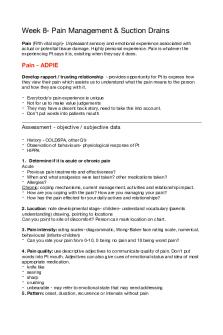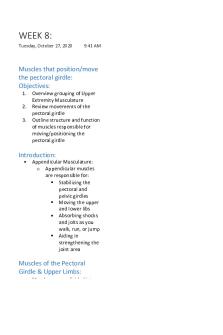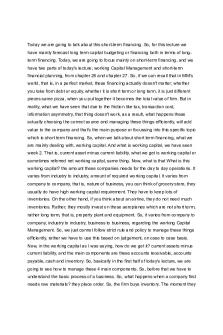GBCM Week 8 - Lecture notes 8 PDF

| Title | GBCM Week 8 - Lecture notes 8 |
|---|---|
| Course | Global Business Culture and Management |
| Institution | City University of Hong Kong |
| Pages | 8 |
| File Size | 292 KB |
| File Type | |
| Total Downloads | 36 |
| Total Views | 140 |
Summary
GBCM Lecture Notes + notes from textbook content ...
Description
Organisational Structure if ikea cant do wos which one would you suggest Organisational Structure → must evolve to accommodate internationalisation → should be contingency based → must fit with strategy
Evolution and Change in MNC Organisational Structures Structural Evolution / Stage Model At each stage, the firm’s managers redesign the organisational structure to optimise strategy’s chance to work. E.g. making changes in firm’s tasks and relationships, designating authority, responsibility, lines of communication, geographic dispersal of units, etc. For example: Aluminum Company of America (Alcoa) - Split into smaller units - Linked geographically dispersed, but similar businesses e.g. Brazil & Australia can have similar business structure, we can link together and gain synergy
Typical ways to structure international activity (from least to most complicated) Domestic structure plus export department Many firms, especially smaller ones, start their international involvement by exporting. They can use the service of an export management company for this, or reorganise into domestic structure plus export department Company should give export department autonomy Domestic Structures Plus Foreign Subsidiary
This can facilitate access and development of specific foreign markets. To be effective, subsidiary managers should have a great deal of autonomy and be able to adapt and respond quickly to serve local markets Integrated Global Structures International Division Firm can decide to specialise by creating an international division, organised along functional, product, or geographic lines. Foreign subsidiaries are organised under the international division. Subsidiary managers report to its head, who is typically given the title of VP, International Division. The VP reports to CEO of the corporation. It permits managers to allocate and coordinate resources for foreign activities under one roof, and thus, enhances firm’s ability to respond both proactively and reactively to market opportunities.
Global Functional Structure Designed on the basis of the company’s functions: production, marketing, finance, etc. Foreign operations are integrated into the activities and responsibilities of each department, to gain functional specialisation and economies of scale. This form of organisation is primarily by small firms with highly centralised systems. Everything is global here, all the functions are global functions. E.g. finance doesn’t only take care of finance in US but globally Global Product (divisional) Structure
In this structure, a single product (or product line) is represented by a separate division. Each division is headed by its own general manager, and is responsible for its own production and Each division is a strategic business unit (SBU), a self-contained business with its functional department and accounting systems. Advantages: market concentration, innovation, responsiveness to new opportunities in a particular environment. A problem can be that there can be ongoing difficulties in coordination of widely dispersed operations. An answer to this problem (particularly for large MNCs) is to reorganise into a global geographic structure.
Global Geographic (area) Structure
This is the most common form of organising foreign operations. Divisions are created to cover geographic regions. Each regional manager is responsible for the operations and performance of the countries within the given region. So country and regional needs and relative market knowledge take precedence over product expertise. Local managers are familiar with cultural environment, government regulations, business transactions. Their language skills and local contacts facilitate daily transactions and responsiveness to the market. Problems may include coordination across regions. The focus is more on marketing because products can be adapted to local requirements. Good for marketing-oriented companies that produces a wide range of products that can be marketed through similar channels of distribution to similar customers
Matrix Geographic Structure
A matrix structure is a hybrid organisation of overlapping responsibilities. The structure is developed to combine geographic support for both global integration and local responsiveness Leads to prioritisation problem (handling overlapping and conflicting responsibilities), confusion, and communication problem, conflict over having more than one boss to report to. “[E]xecutives associate the matrix organization with unclear responsibilities, a lack of accountability, and political battles over resources, resulting in risk-averse behavior and loss of market share.”
Organising For Globalisation No matter what stage of internationalisation, a firm’s structural choices always involve 2 opposing forces. 1. The need for differentiation (focusing and specialising specific markets) 2. The need for integration (coordinating those same markets). Examples: IBM IBM reorganised to achieve globalisation by moving away from its traditional geographic structure to a global structure based on its 14 worldwide industry groups: e.g. banking, retail, insurance. They shift power from country managers to centralised industry expert teams. Previously country-based functions are now globalised. For example, IBM’s growth market operations are served by HR specialists in Manila, accounts receivable are processed in Shanghai, accounting done in Kuala Lumpur, procurement in Shenzhen.
Microsoft In 2013, Microsoft, in a reversal of its divisional structure, disbanded its 8 product divisions and created 4 new ones, arranged around broader functional themes to streamline its technology and compete better with Apple and Google in the global mobile and internet markets. They wanted to reduce duplication and create more cooperative teamwork among the new managers. BMG x Alibaba China’s leading ecommerce group has signed a deal with music company BMG. The deal includes digital rights to more than 2.5m recordings. The tie-up is an indication of Alibaba’s intention to grow its share of the music market The deal reflects optimism that it is possible to make money in China--- a center for piracy Progress on intellectual property issues reflects China’s desire to expand into countries with tougher copyright regimes
Be Global, Act Local Responding to local market structures and consumer preferences along the globalisationregionalisation continuum. Firms tend to rush to get on the globalisation bandwagon (activity that has suddenly become popular) and sacrificed the ability to respond to local market structures and consumer preferences. Managers are now realising that, depending on the type of products, market, etc., a compromise must be made along the globalisation-regionalisation continuum. E.g. Flipkart, an e-commerce company registered in SGP and operating in India. It is often called Amazon of India, but they used Curry-Carrying Dabawallas to deliver parcels. India’s leading online retailer is launching a low-tech approach to deliveries. It joined forces with 5000 dabbawalas to cart hot curry lunches around Mumbai. They ferry roughly 130000 lunch boxes up and down India’s financial capital each day. The delivery man picks up home-cooked meals from residences each morning and cram onto trains to rush meals to workers in local office. Delivery man can drop into Flipkart’s distribution centers to pick up everything from books to toys, for delivery where they also collect lunches. The dabbawallas are organised into teams of 20, collecting lunch boxes, sorting them by destination and loading them on to Mumbai’s trains. Each tiffin box changes hands several times before arriving at destination. The system uses codes of numbers, letters, symbols, colours: six sigma process which is a management term for a method with less than 3.4 errors per million. “It is hard to find reliable people who understand local geography. But for people in Mumbai, these guys are trusted, they are almost like family” - an executive at Flipkart, who runs the dabbawalla partnership.
Levi Strauss Balance - The company ensured its ability to respond to local needs by allowing managers to act independently - Keeps some centralised control, but decentralises control out of foreign subsidiary.
To gain profitability in each region and create new market especially in emerging market...
Similar Free PDFs

GBCM Week 8 - Lecture notes 8
- 8 Pages

Week 8 - Lecture notes 8
- 6 Pages

Week 8 - Lecture notes 8
- 23 Pages

WEEK 8 - Lecture notes 8
- 10 Pages

Week 8 - Lecture notes
- 3 Pages

Week 8, Part 2 - Lecture notes 8
- 5 Pages

8 - Lecture notes 8
- 21 Pages

8 - Lecture notes 8
- 21 Pages

4 - Lecture notes Week 8
- 2 Pages

8 Midwifery - Lecture notes 8
- 3 Pages

Taxation 8 - Lecture notes 8
- 2 Pages

Week 8 Lecture
- 51 Pages

Dox 8 - Lecture notes 8
- 21 Pages
Popular Institutions
- Tinajero National High School - Annex
- Politeknik Caltex Riau
- Yokohama City University
- SGT University
- University of Al-Qadisiyah
- Divine Word College of Vigan
- Techniek College Rotterdam
- Universidade de Santiago
- Universiti Teknologi MARA Cawangan Johor Kampus Pasir Gudang
- Poltekkes Kemenkes Yogyakarta
- Baguio City National High School
- Colegio san marcos
- preparatoria uno
- Centro de Bachillerato Tecnológico Industrial y de Servicios No. 107
- Dalian Maritime University
- Quang Trung Secondary School
- Colegio Tecnológico en Informática
- Corporación Regional de Educación Superior
- Grupo CEDVA
- Dar Al Uloom University
- Centro de Estudios Preuniversitarios de la Universidad Nacional de Ingeniería
- 上智大学
- Aakash International School, Nuna Majara
- San Felipe Neri Catholic School
- Kang Chiao International School - New Taipei City
- Misamis Occidental National High School
- Institución Educativa Escuela Normal Juan Ladrilleros
- Kolehiyo ng Pantukan
- Batanes State College
- Instituto Continental
- Sekolah Menengah Kejuruan Kesehatan Kaltara (Tarakan)
- Colegio de La Inmaculada Concepcion - Cebu


